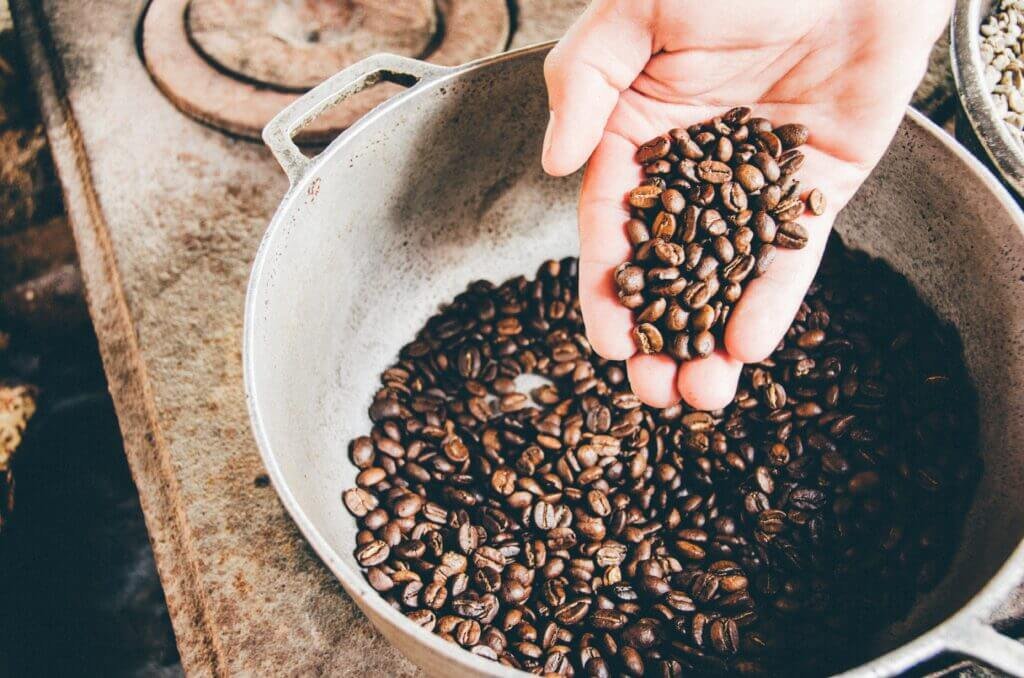Are you a coffee lover in search of that perfect cup of joe? Look no further, as we’re here to guide you on your quest to find the best quality coffee. With so many varieties and brands available, it can be overwhelming to navigate the vast world of coffee. Fear not, as we will explore the key factors to consider when determining the quality of coffee beans, including origin, roast level, and freshness. Get ready to elevate your coffee experience and savor every sip of this beloved beverage.

Different Types of Coffee
Arabica Coffee
Arabica coffee is often considered the higher-quality option among coffee lovers. This variety is known for its smooth and nuanced flavors, with a hint of acidity and sweetness. Arabica beans have a higher oil content, which contributes to a richer flavor and aroma. They tend to be more expensive than other types of coffee due to their more delicate cultivation requirements and lower yield. If you’re looking for a refined and flavorful cup of joe, Arabica coffee is the way to go.
Robusta Coffee
Robusta coffee, as the name suggests, is robust and strong in flavor. These beans are known for their higher caffeine content and their ability to withstand different growing conditions. Robusta coffee tends to have a more bitter and earthy taste, with less acidity and complexity compared to Arabica. While it may not be as highly regarded as Arabica in terms of taste, Robusta beans are often used in espresso blends to give them a stronger kick. If you prefer a bolder and more intense coffee experience, Robusta coffee may be your cup of tea.
Blend of Arabica and Robusta
A blend of Arabica and Robusta beans offers the best of both worlds. By combining the unique characteristics of these two types of coffee, you can achieve a balanced and flavorful brew. Blending Arabica and Robusta beans allows for more creativity in taste profiles, as the qualities of each variety can complement and enhance one another. This blend is commonly found in many commercial coffee brands and is generally more affordable than pure Arabica coffee. It provides a middle ground for those who appreciate both the smoothness of Arabica and the boldness of Robusta.
Coffee Bean Roasts
Light Roast
A light roast is characterized by its light brown color and delicate flavor profile. These beans are roasted for a relatively short amount of time, preserving their natural acidity and fruity notes. Light roast coffee has a higher caffeine content compared to darker roasts and tends to have a lighter body. It is perfect for those who enjoy the vibrant and nuanced flavors of the coffee bean’s origin. Light roast coffee is often favored in specialty coffee shops and is ideal for savoring the unique characteristics of different coffee beans.
Medium Roast
Medium roast coffee strikes a balance between the acidity and body of the coffee bean. It has a medium-brown color and a slightly sweeter taste compared to light roast coffee. The flavors of medium roast coffee are more pronounced, with a good mix of acidity and caramel-like sweetness. This roast level is versatile and appeals to a wide range of coffee drinkers, offering a well-rounded and enjoyable cup of coffee. Whether you prefer a morning pick-me-up or an afternoon treat, medium roast coffee is a safe bet.
Dark Roast
Dark roast coffee beans are roasted for a longer period, resulting in a deep brown or near-black color. This roast level brings out rich and bold flavors, with a lower acidity compared to lighter roasts. Dark roast coffee often exhibits smoky, chocolatey, or even burnt undertones, providing a pronounced and intense coffee experience. The body of dark roast coffee is usually fuller, making it an excellent choice for those who prefer a strong and robust cup of coffee. It is commonly used for espresso-based drinks and pairs well with milk-based beverages.
Coffee Production Methods
Washed Process
The washed process, also known as the wet process, involves removing the coffee cherry’s outer skin and pulp before drying the beans. This method typically produces cleaner and brighter flavors, with a higher level of acidity. The washed process is time-consuming and requires a significant amount of water, making it more common in regions with access to abundant water sources. This method is favored for showcasing the intrinsic flavors of specialty coffee beans and is often associated with the production of high-quality Arabica coffee.
Natural Process
In the natural process, also known as the dry process, the coffee cherries are dried whole, allowing the beans to ferment inside. This method creates a more intense and fruity flavor profile, with lower acidity compared to the washed process. The natural process is often used in regions with limited water resources, as it requires less water than the washed process. Due to the prolonged contact between the bean and the fruit, natural process coffees can have more pronounced and exotic flavor notes, making them a favorite among coffee enthusiasts seeking unique and robust taste experiences.
Honey Process
The honey process, also known as the pulped natural process, combines elements of both the washed and natural methods. In this process, the outer skin of the coffee cherry is removed, but some of the sticky fruit pulp is left on the beans during drying. This results in a flavor profile that falls between the washed and natural processes – a balance of acidity and sweetness. The honey process allows for more control over the final flavor characteristics, making it a popular choice for producing specialty coffees with distinct and complex tastes.
Coffee Grind Size
Coarse Grind
A coarse grind consists of larger coffee particles that are similar in size to coarse sea salt. This grind level is commonly used for French press and cold brew methods, where a longer immersion time is required. The coarser grind allows for a slower extraction, resulting in a smoother and less bitter cup of coffee. The water passes through the coffee particles more slowly, allowing for the extraction of desirable flavors while minimizing the extraction of undesirable compounds. Coarse grind is also suitable for certain drip coffee makers and percolators.
Medium Grind
A medium grind falls between the size of table salt and granulated sugar. This versatile grind level is suitable for a wide range of brewing methods, including pour-over, drip coffee makers, and some espresso machines. The medium grind allows for a balanced extraction, capturing both the aroma and the flavors of the coffee beans. It is often the go-to grind choice for many coffee drinkers due to its compatibility with various brewing equipment and its ability to produce a well-rounded and satisfying cup of coffee.
Fine Grind
A fine grind is characterized by small coffee particles, similar to granulated sugar or slightly finer. This grind level is typically used for espresso machines, Moka pots, and certain pour-over methods like the AeroPress. The fine grind allows for a quick and efficient extraction of flavor, given the shorter contact time with the water. However, caution must be exercised when using a fine grind, as it can easily lead to over-extraction and a bitter taste. Adjusting the brew time and water temperature is crucial when working with a fine grind to achieve a well-balanced cup of coffee.

Coffee Storage
Whole Bean vs Ground Coffee
When it comes to coffee storage, there is a key decision to make – whether to buy whole beans or pre-ground coffee. Whole beans offer the advantage of freshness and flavor preservation since the coffee beans remain intact until they are ready to be brewed. By grinding the beans just before brewing, you can ensure maximum freshness and a more flavorful cup of coffee. Pre-ground coffee, on the other hand, provides convenience and saves time. However, ground coffee is more susceptible to oxidation and flavor degradation, as the increased surface area allows for a faster release of aroma and flavor compounds.
Airtight Containers vs Open Pouches
To maintain the freshness of your coffee, it’s essential to store it properly. Airtight containers are a popular choice for coffee storage, as they prevent air, moisture, and light from degrading the quality of the coffee beans. These containers can be made of glass or stainless steel and come with an airtight seal. Alternatively, some coffee pouches have built-in one-way valves that allow carbon dioxide to escape while preventing oxygen from entering. Open pouches or bags without proper sealing are not recommended for long-term coffee storage, as they expose the beans to air and moisture, accelerating the deterioration of flavor and aroma.
Refrigeration vs Room Temperature Storage
Coffee storage is often a topic of debate, with some advocating for refrigeration while others prefer room temperature storage. The general consensus is that refrigeration is not ideal for storing coffee, as it can lead to moisture buildup and transfer of odors from other foods in the fridge. The fluctuating temperature in the refrigerator can also affect the flavor and aroma of the coffee beans. Instead, it’s best to store coffee at room temperature in a cool and dry place, away from direct sunlight and humidity. This ensures the preservation of flavor and freshness, allowing you to enjoy a delicious cup of coffee every time.
Country of Origin
Colombian Coffee
Colombian coffee is renowned worldwide for its high quality and consistency. The country’s ideal coffee-growing conditions, including rich volcanic soil, high altitudes, and a temperate climate, contribute to the outstanding flavor profiles of Colombian coffee. Typically medium-bodied with a well-balanced acidity, Colombian coffee exhibits notes of chocolate, caramel, and citrus, making it a favorite among many coffee enthusiasts. The unique combination of climate, altitude, and meticulous farming practices has earned Colombian coffee a well-deserved reputation for excellence.
Brazilian Coffee
Brazil is the largest producer of coffee in the world, known for both its quantity and quality. Brazilian coffee often has a nutty and chocolatey flavor profile, with a mellow acidity. The country’s vast coffee plantations and diverse growing regions result in a wide range of taste profiles, from caramel and peanut to fruity and floral notes. Brazilian coffee is typically full-bodied and smooth, making it a popular choice for espresso blends and dark roast lovers. Its accessibility and affordability also contribute to its popularity around the globe.
Ethiopian Coffee
Ethiopia is considered the birthplace of coffee, and its coffee culture is deeply rooted in the country’s history and traditions. Ethiopian coffee is known for its distinct and complex flavors, often described as fruity, floral, and tea-like. Each region in Ethiopia produces unique coffee profiles, with flavors ranging from blueberry and strawberry to jasmine and bergamot. Ethiopian coffee is predominantly grown using traditional and organic farming methods, contributing to its exceptional quality. The vibrant and diverse taste experiences offered by Ethiopian coffee have made it a favorite among specialty coffee enthusiasts.

Certifications
Fair Trade Certified Coffee
Fair Trade certification ensures that coffee farmers receive fair prices for their produce and encourages sustainable farming practices. When you purchase Fair Trade certified coffee, you are supporting the livelihoods of small-scale farmers and promoting social and environmental responsibility in the coffee industry. Fair Trade coffee guarantees fair wages, safe working conditions, and the protection of workers’ rights. This certification also encourages sustainable farming practices, such as organic cultivation and biodiversity conservation. By choosing Fair Trade certified coffee, you can enjoy your cup of coffee while making a positive impact on the lives of coffee producers.
Organic Coffee
Organic coffee is grown without synthetic fertilizers, pesticides, or chemicals, ensuring a more environmentally friendly and sustainable farming approach. Organic certification guarantees that strict regulations and standards are followed throughout the cultivation and processing of the coffee beans. By choosing organic coffee, you are supporting agricultural practices that promote soil conservation, biodiversity, and the health of ecosystems. Organic coffee often exhibits cleaner and more naturally derived flavors, allowing you to enjoy a cup of coffee free from harmful residues and chemicals.
Rainforest Alliance Certified Coffee
Rainforest Alliance certification signifies that coffee farms meet rigorous environmental, social, and economic standards. This certification ensures that coffee production enhances biodiversity, protects waterways, and conserves natural resources. In addition, Rainforest Alliance certification promotes the well-being and fair treatment of farm workers and their communities. By purchasing Rainforest Alliance certified coffee, you contribute to the preservation of forests, wildlife, and sustainable livelihoods. This certification is an excellent choice for coffee lovers who value both the quality of their beverage and the well-being of the planet.
Flavor Profiles
Acidity
Acidity in coffee refers to a pleasant and desirable tartness or brightness that adds complexity to the flavor profile. It is not the same as sourness, which can be an unwanted characteristic. Acidity is often described as either low, medium, or high, and it contributes to the crispness and liveliness of the coffee. Different coffee origins and roasting levels can influence the acidity levels in the brew, offering a wide range of taste experiences. Whether you prefer a bright and vibrant cup or a smoother, more mellow flavor, the acidity of coffee plays a crucial role in your enjoyment.
Body
The body of coffee refers to its weight and texture in the mouth. It is influenced by factors such as the bean variety, roast level, and brewing method. Coffee can exhibit a light, medium, or heavy body, much like the consistency of different types of milk. A light-bodied coffee often feels delicate, while a heavy-bodied coffee has a more substantial and syrupy mouthfeel. The body of coffee can influence the overall taste experience, providing a creamy and full sensation or a lighter and more refreshing mouthfeel.
Aroma
The aroma of coffee encompasses the fragrances that are released when coffee is brewed. It is experienced through the nose before taking the first sip. The aroma of coffee can be influenced by its origin, roast level, and brewing method. Different coffee beans offer distinct aromatic profiles, ranging from floral and fruity to earthy and nutty. The aroma of coffee can elevate the enjoyment of the beverage, as it prepares your senses for the upcoming flavors. A pleasant and inviting aroma often enhances the overall coffee-drinking experience.
Flavor Notes
Coffee flavor notes refer to the specific flavors and taste characteristics that can be detected in a cup of coffee. These notes can range from familiar flavors like chocolate, caramel, and citru



